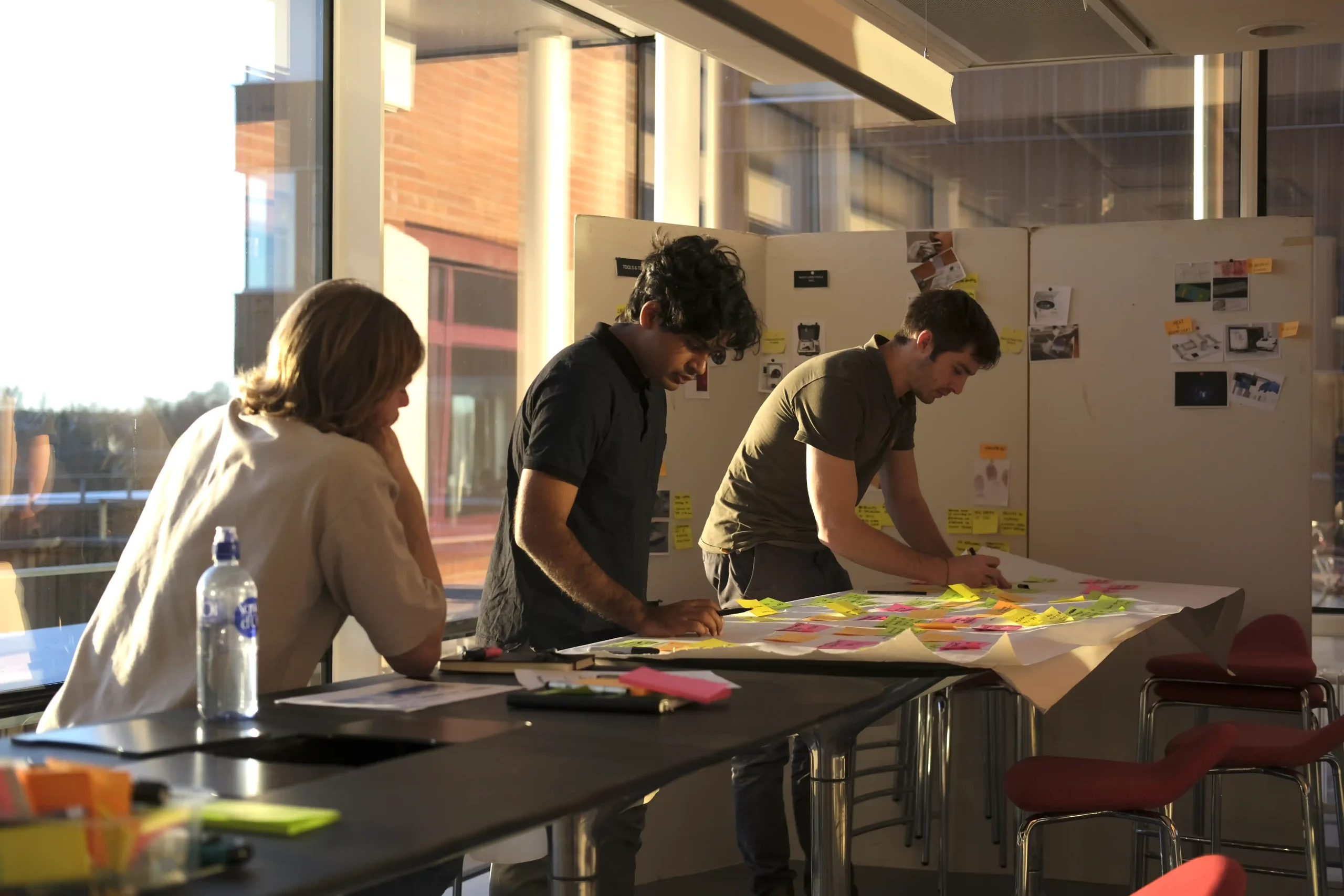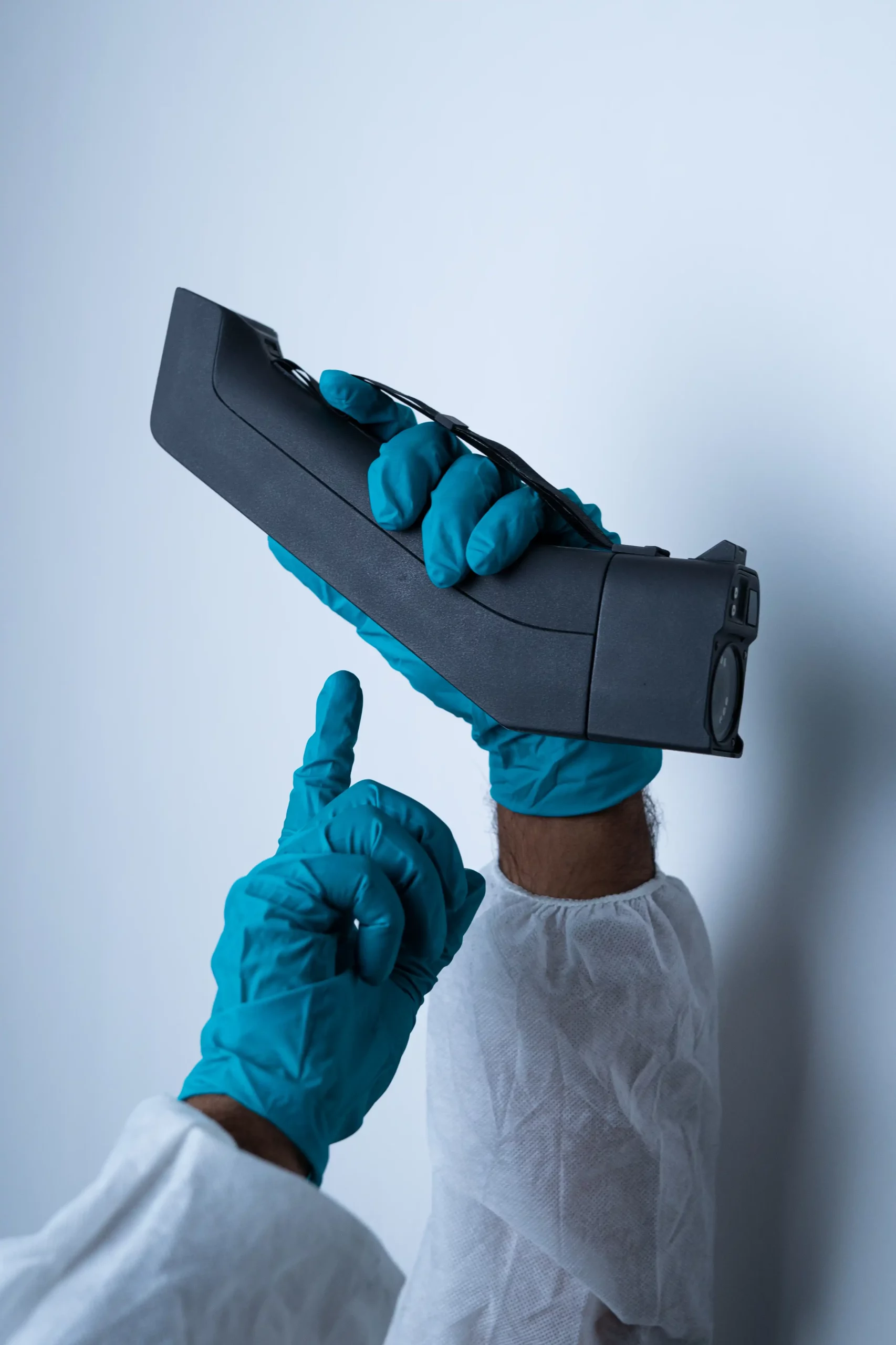IMPRNT
Forensic Tool for the Police
and Crime Scene Investigators for
Finding and Capturing Relevant Fingerprints
Solo term project
Duration: 10 weeks (2021/2022)
Collaboration partners:


Present workflow

Locating
Investigators use their intuition, experience, and information gathered from the victims on-site to locate fingerprints of interest.

Pre-documentation
Before the physical documentation, a digital backup is secured as a helpful safeguard in case of errors while acquiring the physical output.

Documentation
The fingerprints are documented carefully and precisely with different physical methods depending on the surface they are on.

Further Analysis
Lifted prints are secured on a documentation card with case details and other information, which is forwarded to the forensic lab.
Analogue tools are used for a...
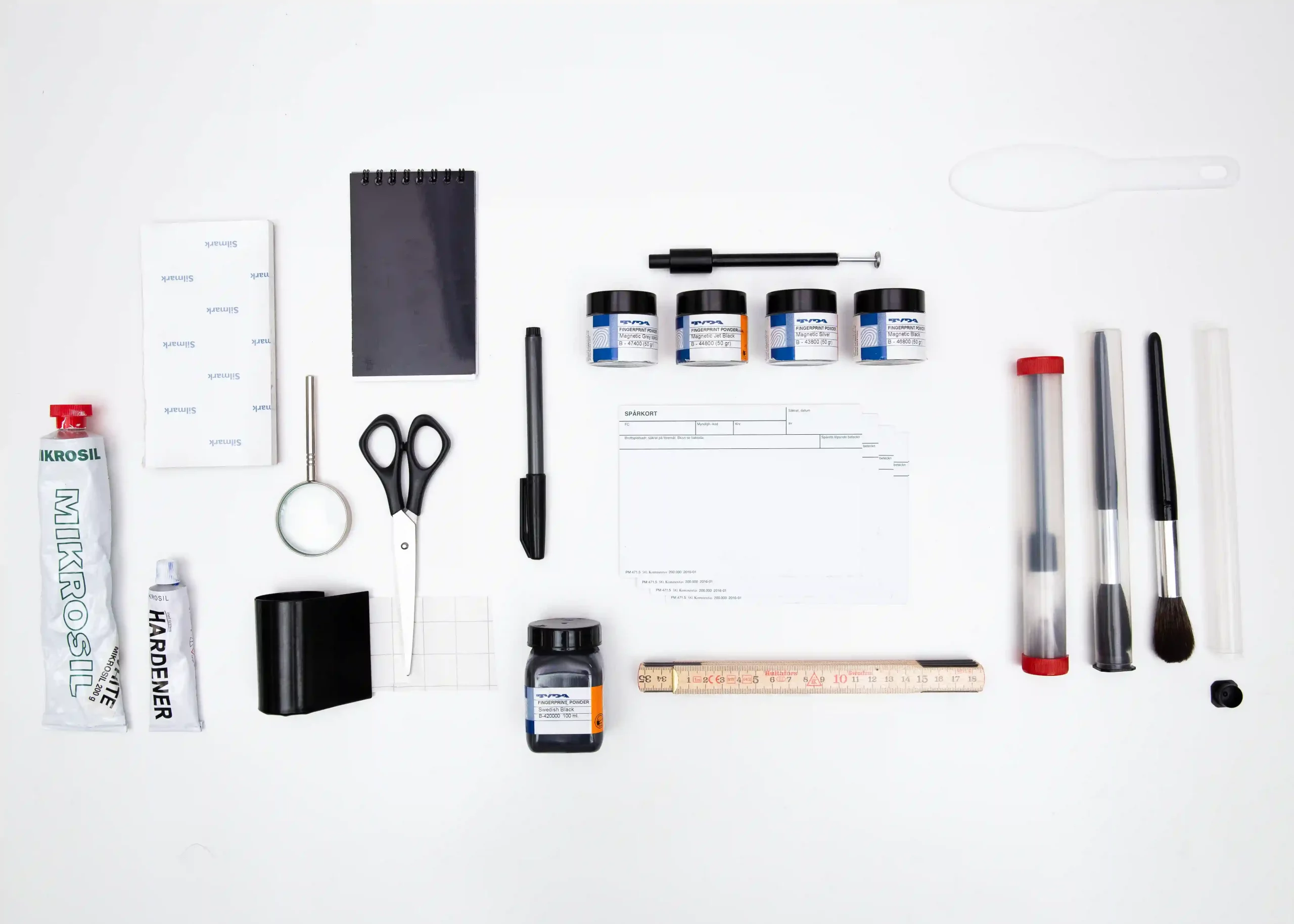
Physical result, which is...

Digitalised at the lab.

"How might we assist the investigators in analysing and accurately identifying relevant fingerprints already on-site and documenting them time-efficiently?"

Design requirements:
1. Gather fingerprint samples from victims on-site
2. Detect fingerprints on various surfaces
3. Compare said prints and identify relevant prints
4. Document relevant prints in the established format
5. Compact form factor

IMPRNT introduces a new workflow by equipping the on-site investigators with a fingerprint analysis tool which assists them in identifying relevant fingerprints with increased accuracy and efficiency.
This design concept demonstrates how human-centered design can seamlessly integrate existing technologies to shape products that benefit society. Please note that I do not claim to have invented any of the technologies mentioned in this project.

01> Gather references
With an in-built fingerprint scanner, IMPRNT empowers victims to share their fingerprints at the crime scene voluntarily. The collected fingerprints are securely stored within the device and are deleted once the on-site examination is complete. The investigators inform the victims about the purpose and benefits of sharing their fingerprints before they request it.

02> Detect the right prints
The Investigators can then utilise IMPRNT’s multi-spectral illumination capabilities to examine latent fingerprints on objects and surfaces. The device performs a real-time comparison between the fingerprint under observation and those collected from the victims, which facilitates the investigators in efficiently pinpointing unidentified prints, which may be crucial to the investigation.

03> Document & share digitally
These relevant fingerprints can be digitally documented on the device on a 1:1 scale. Digital documentation enables contactless fingerprinting, thereby reducing the chances of errors while collecting prints resulting in high-quality forensic evidence. Contactless fingerprinting also allows the fingerprint to be available for other types of forensic analysis processes.

01> Gather references
02> Detect the right prints
03> Document & share digitally

Designed for upgradability
With time, the entire front module, which holds the high-tech aspects of the product, can be replaced with advancing technology. The front module of the device has a provisional space to add on upgrades. All these factors contribute to ensuring the longevity and relevancy of the product over a longer period of time, making it a logical investment for law enforcement agencies.

Minimised contact area
A crime scene is a highly sensitive space. Investigators are often required to place their tools on available surfaces. IMPRNT is designed to have minimum contact with the surface it is placed on to avoid disturbing potential evidence.

Documentation hood
The extendable documentation hood allows for accurate documentation of fingerprints on a 1:1 scale without parallax errors and with minimum contact with the evidence surface.

3D scanning capabilities
IMPRINT utilizes 3D scanned data to analyze fingerprints on complex surfaces, such as double-curved surfaces. Additionally, 3D scanning also assists in accurately recording the location of the fingerprint.

Process transparency
Providing fingerprints is a sensitive subject, especially in traumatic situations. Integrating the fingerprint scanner with the device screen, which the investigators and the victims can both see, ensures transparency in the fingerprint-sharing process.
Concept benefits

Reduced dependency on analogue tools

Paperless/material-less documentation

Assistance in acquiring necessary evidence
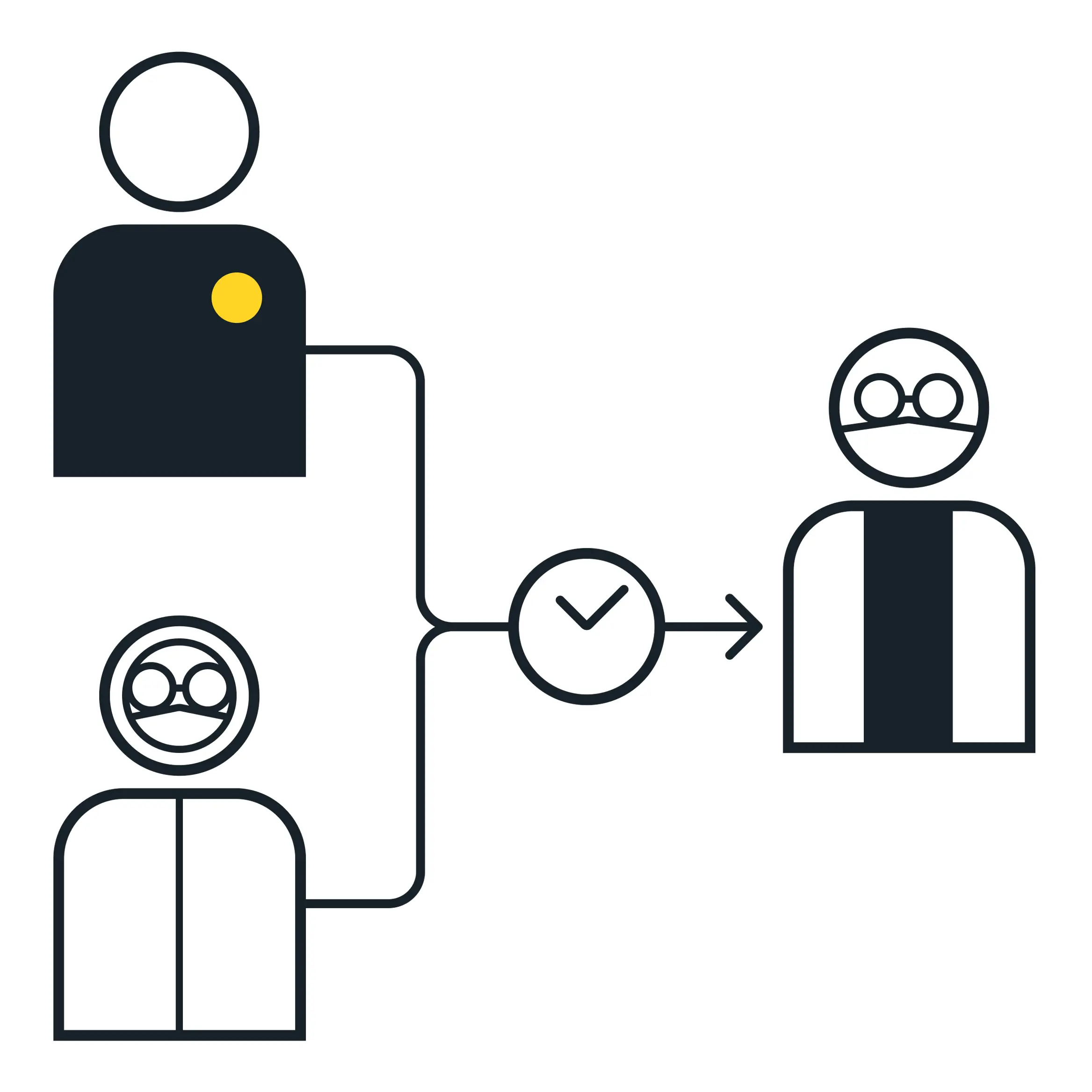
Optimised timeline from the field to the lab

Process
Research sources:
- Field visit: Police Education Unit, Umeå University
- Field visit: Umeå Police Station, CSI department
- Team desktop research
Identifying relevant Design Opportunities:
- Summarising research
- Ideation workshop
- Role-playing
- Experiential prototyping
Concept development (Human-centered approach):
Various architectures were explored to identify suitable interactions between the victims and the police during the fingerprint-collection process and to determine the relationship between functionality, ergonomics and semantics.
Concept 1: transformability

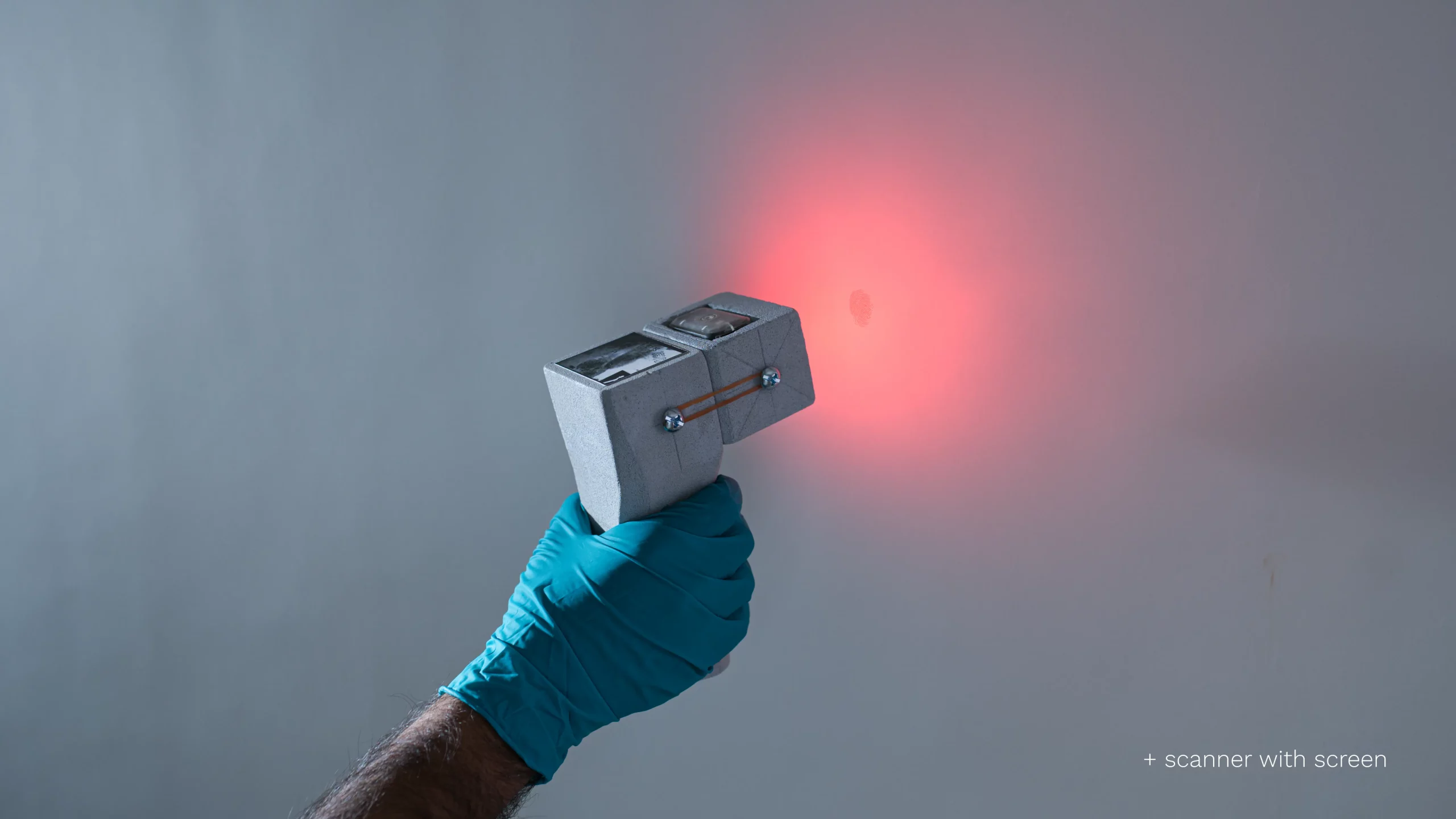



Concept 2: flexibility



Concept 3: accessibility



Concept 4: compact design


Concept evaluation: Police Education Unit

Concept evaluation: Crime Scene Investigators

Summarised insights
- Standalone device: Integrated compact screen
- Process of gathering prints should be transparent
- Appreciated the idea of replacing the flashlight
- Preferably single-hand operation
Concept refinement (foam modelling):
This stage assisted in understanding the physical aspects of the concept, such as screen size, fingerprint scanner location, form and volume. These models were used to get feedback from the crime scene investigators to understand how they can be optimised for the field.
Design details and considerations:

Selected Works

Rescusci CartGraduation Project (Solo)

pebbleStrategic Product Design (Team)

Design Language SystemHardware design language exploration for Laerdal

CAPSULEConceptual Product Solutions (Team)

HORIZONSound Design (Team)

XO driverProduct Construction and Analysis (Solo)

EVionElectric Charger for the Indian Context (Solo)


